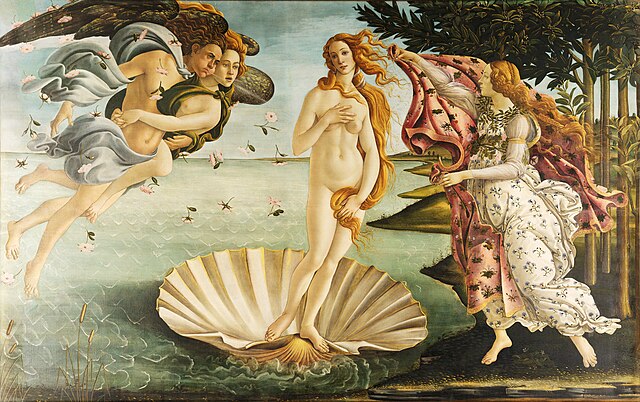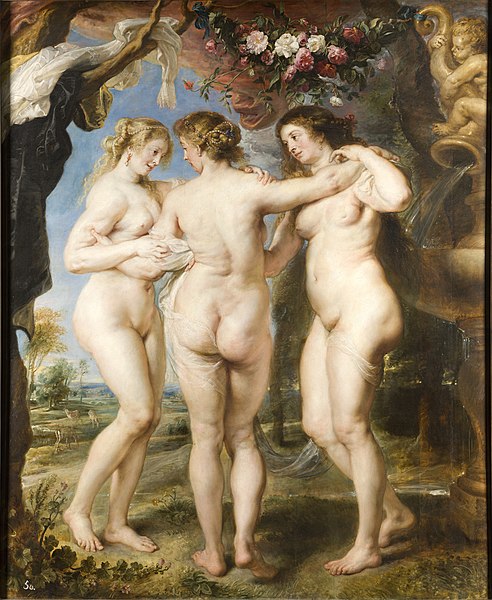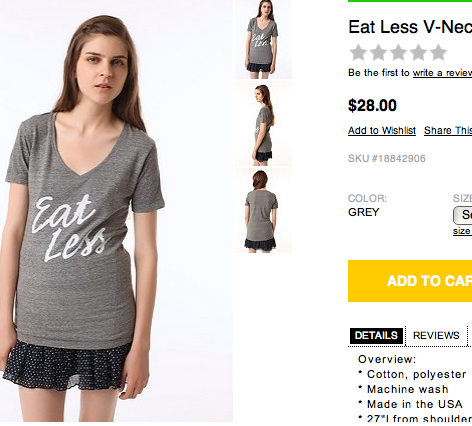"What are these?" I asked my mom, laughing at the leg bottoms expanding at least 8 inches.
"Elephant bell bottoms....They were in style back then!!" She said defensively in response to my raised eyebrow and crinkled nose at the hideous things.
* see elephant bell bottoms, here)
This is a normal scenario: Daughters dig around in their mothers' old drawers and trunks and pull out "hideous" clothing, like elephant bell bottoms. We laugh in their faces, and they impress upon us that "back then, they were in style," and then we thank the heavens that we never wore such tacky things, as we do all sorts of jumps and leaps to get our skin-tight skinnies on.
We laugh under our breaths and roll our eyes at the hairstyles of the 1980's and remind ourselves that we "would never wear our hair like that!" Because we know that those hairstyles were incredibly unattractive. I mean, hello, we have TV shows and memes that make fun of them! So we put on our face primer, wrinkle-reducing moisturizer, pull our knee-high boots on, and eat, well nothing, as we make sure to get the skinny latte instead of the regular one- you know, the "fat" one. We dismiss our mom's bell bottoms and 80's hair as stupid and ridiculous, and applaud ourselves for overcoming decades of hideousness as we strive to look like:
This
Instead of this:
This
Instead of this:

We "know" what real beauty is, and we "know" better than the women before us on how to attain it.
However, whether you are aware of it or not, you are in the middle of a story that began as early as, and even before, 20.000 BCE. For while you exempt yourself from the "ugly" fashions that came before you, you are currently within a trend that will one day become outdated, and your daughter will laugh at your trendy skinnies, furry boots, and plaid shirts.
As attractive, desirable, modern, and "normal" as you find the "thigh gap," plastic surgery, body wraps, size two's or zeros, multivitamin/mineral supplements that promote increased metabolism, side-swept bangs, tanned skin, BB cream primers, and yes, your jeans and hairstyle, you are not omitted from history, you are smack dab in the middle of it.
And while I haven't always been the fondest of history, this is one history lesson that, similar to Lily Myers, I have become increasingly aware of.
And it is this: A woman's body and beauty- like jeans, purses, and shoes- has been evolving over the centuries, and has been directly tied to the "media" of that day. For hundreds of years, the female body most desired by men AND WOMEN had curves, rolls, and yes, cellulite. Don't believe me? Take a look at the media throughout history.
The Venus of Willendorf from 22.000-24.000 BCE

Aphrodite of Cnidus of 4th century BC Greece
Birth of Venus in 1486

Ruben's The three graces in 1639

Lillian Russell, the epitome of Angelina Jolie in the late 1800s (she was 200 lbs at the peak of her career)

Swimmers in the 1930's
The three graces in 1635

Marilyn Monroe in 1955
Despite the hiccup of the Victorian age and that evil contraption called the corset, and then the birth of the flapper girl in the 1920's (you know, that rebellious woman who had no interest in the ideals of her time), the general ideal was that women should, well, look like women: curves, rolls, and all.
However, according to Sarah Lohman, a historic gastronomist, the invention of the standardized dress size during the industrial revolution, advancement in food science like the discovery of the calorie, and the personal scale, alongside increased sedentary behavior and weight gain in America gave birth to increased awareness, speculation, and self-monitoring of the body and diet: AKA, the birth of today's thin-craved society.
People wanted to lose weight and to get in shape. But losing weight went from correcting weight related problems like obesity and heart trouble to obtaining the ideal body.
For instance, the sexual revolution of the 1960's and 1970's leant itself to women like Twiggy and Farrah Fawcett. With all eyes on them, every day women became increasingly aware of their "fat," "large" hips and waist, and two of their greatest enemies, stretch marks and cellulite. Sex appeal was related to showing more skin, having a smaller waist, and appearing thin....and as they say, "the rest is history."
Farrah Fawcett (top) & Twiggy (bottom)
So, what does History teach us? It teaches us that media (art, television, commercials, ads, models, etc) create the trend: They set the standard or ideal for what the rest of us should strive to look like. They remind us of what the norm is. Take a look for yourself.
Then

Now:
What do our commercials advertise? What do magazine covers promote? In what ways do popular actresses and singers and other influential people affect our concept of normal, beauty, and a woman's body. According to history, and the above ads, a whole lot!
What is the conclusion I hope you'll take away with you? The images and ideals on magazines, ads, and television are not necessarily healthy or normal, especially in today's society. We live in the day of virtual video games, digital editing, and Photoshop. We live in a technologically advanced society, that can edit a model to have an unnaturally elongated neck, waste, and legs or larger breast with the click of a mouse. Unfortunately, magazine photos don't come with the reminder of "these are unnatural and fake" on them. We also live in a highly interactive society where social media like Facebook, Twitter, and Google + all create room for us to compare our lives, bodies, and normalcy to one another.
So how do we change history?? How do we go back to when being curvy, having stretch marks, and eating snacks is acceptable? When we realize that the art, commercials, models, and ads do not reflect what "really is" but instead the idealized ,"what could be." When we realize that- just as 80's hair was a fickle trend- so too is being unnaturally skinny. We change the way we talk to or compare ourselves to those around us. We change the way we talk about our bodies and food in front of our daughters (that's another can of worms).
We change history when we realize that we're the one's writing it. What we choose to read, buy, and talk about will continue to lead how much we hope to weigh, what we hope our bodies will look like, and what we consider beautiful.
If we can learn to love and accept our bodies. So will history.






No comments:
Post a Comment